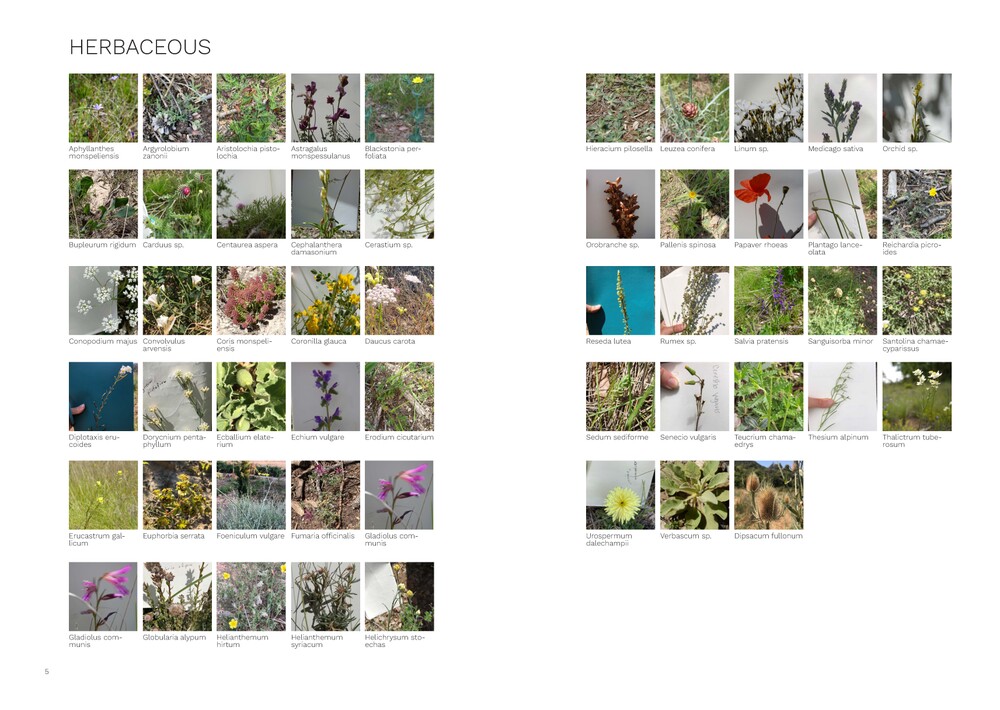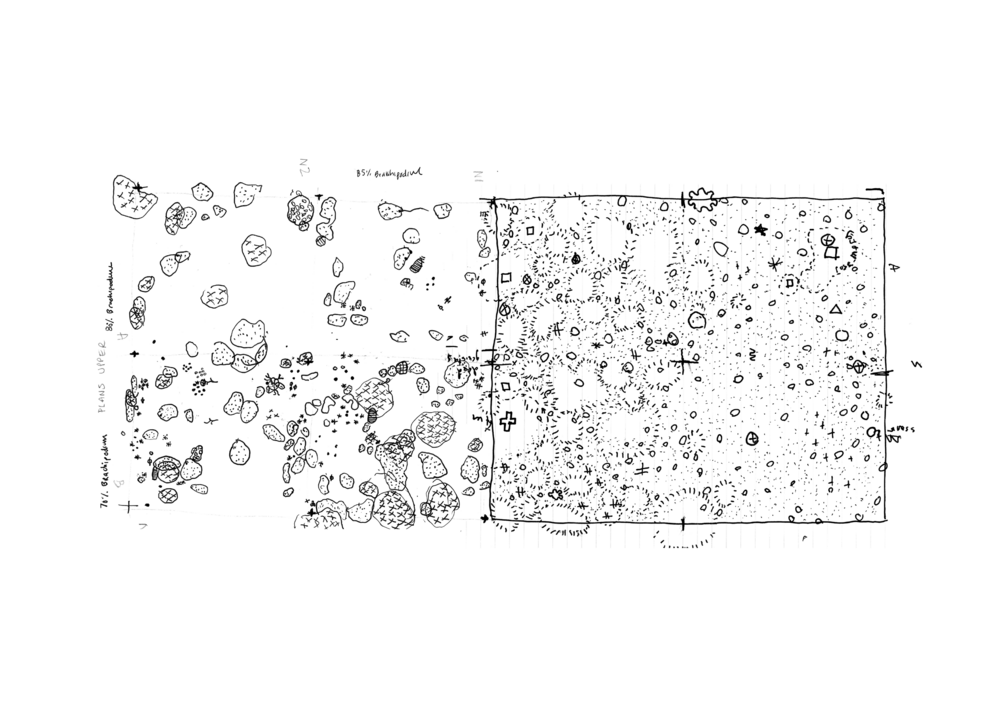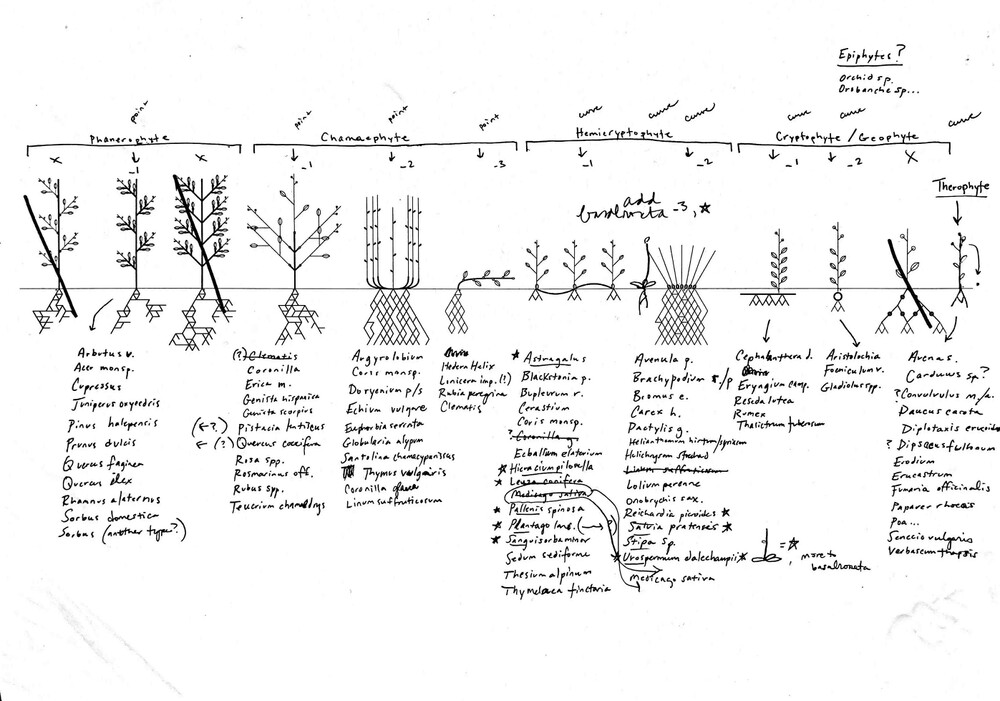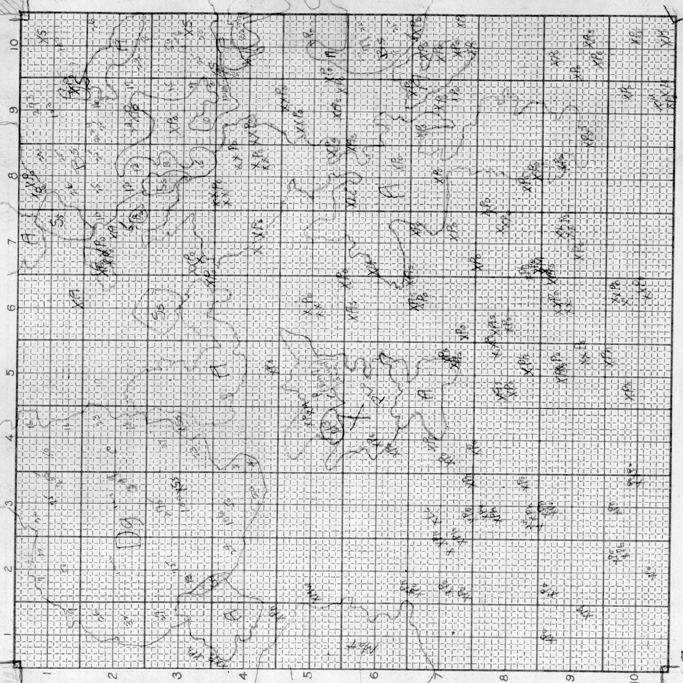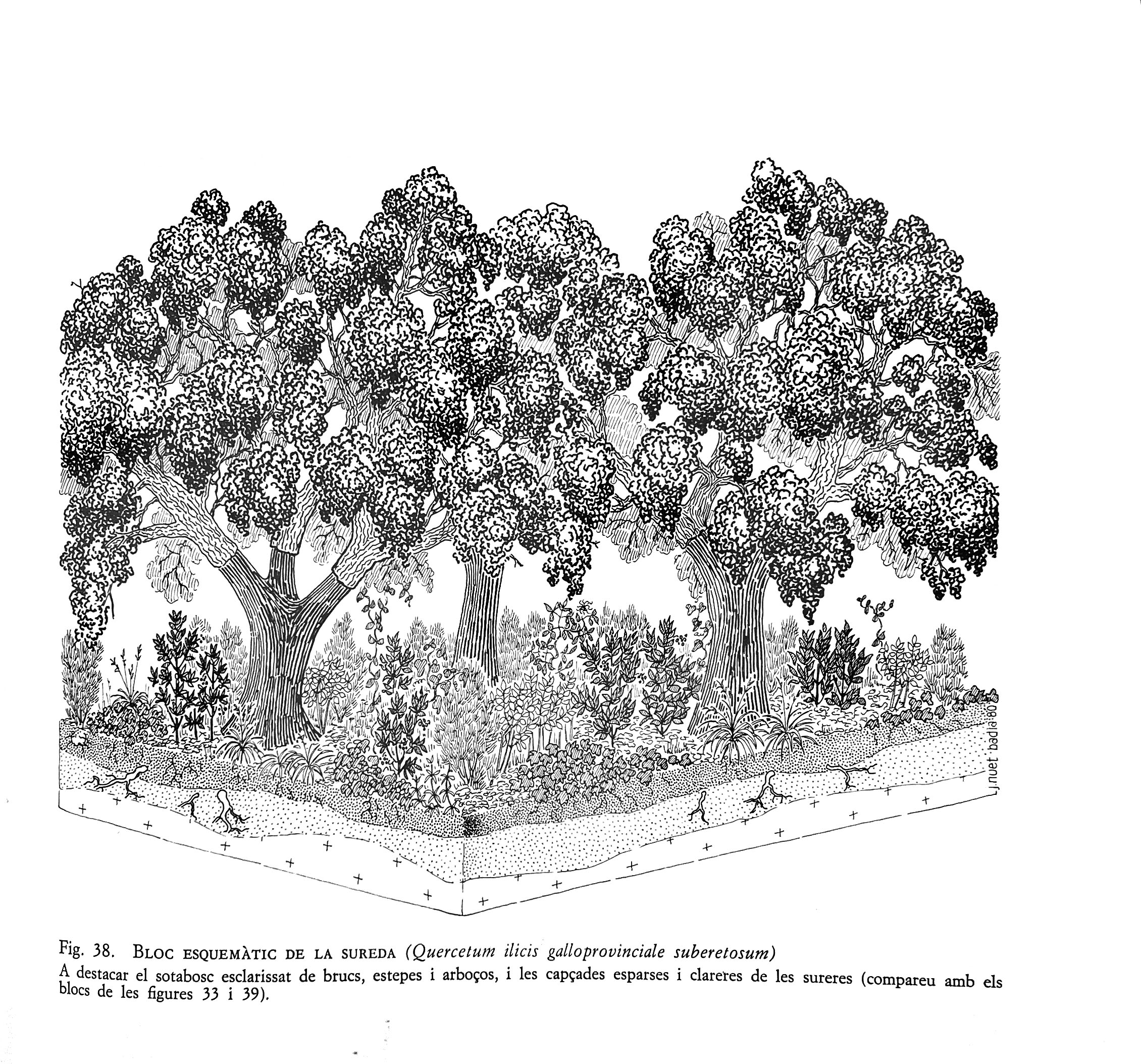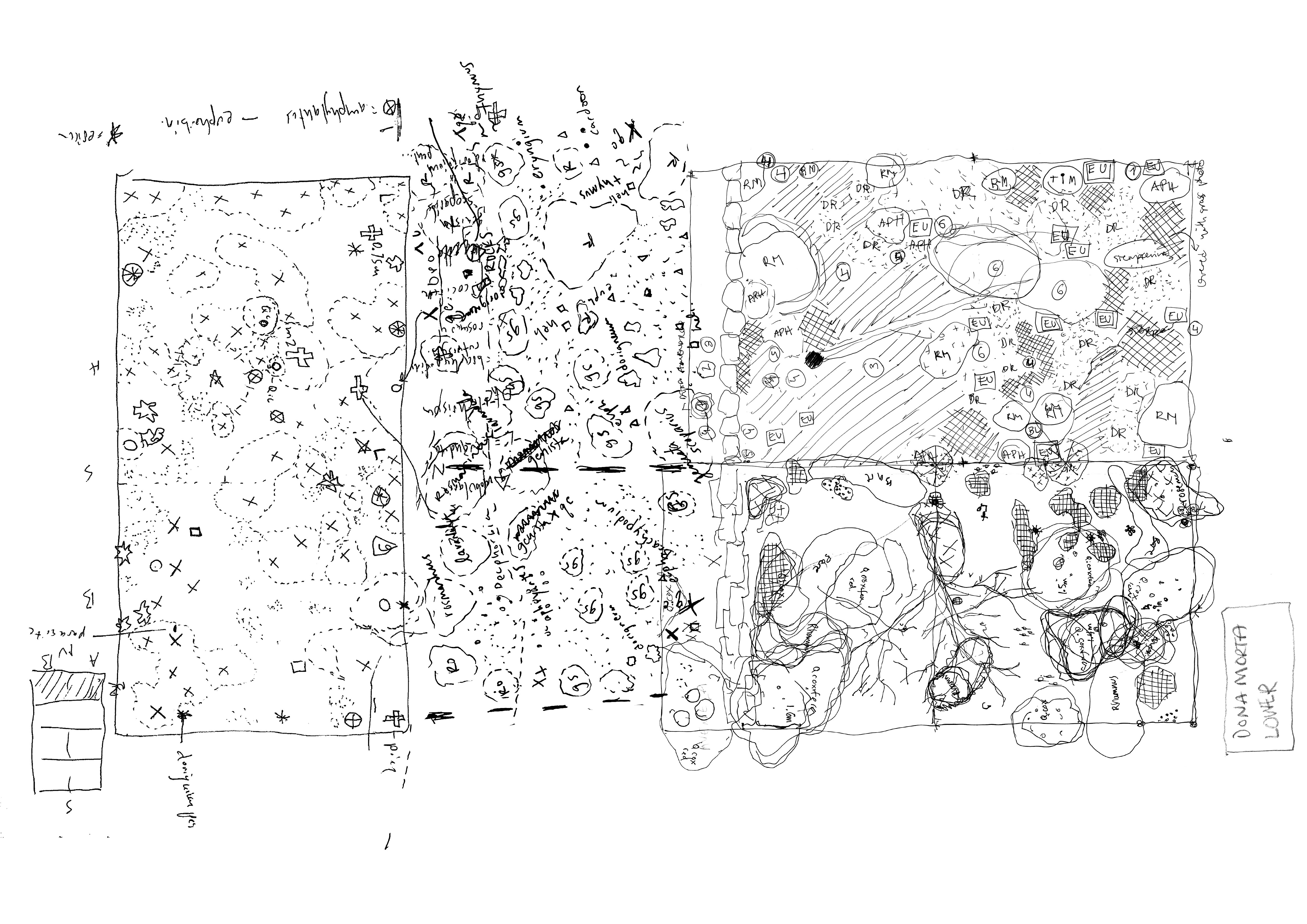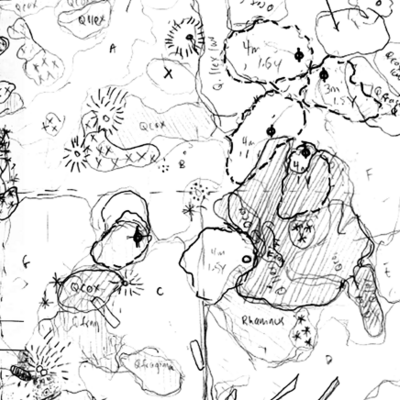
Fieldwork: vegetation survey
Vegetation is a key topic in the garden of the XXI century in Senan. To measure the changes in vegetation during the different phases of the project, the team is conducting a series of vegetation surveys in the test plots. This requires several steps. First, the team spent a day with a local botanist to survey and identify local plants. As a result, a digital plant herbarium of nearly 100 plants was created.
The team then gathered more information about all the plants, including their Latin and English names, life forms, height, and times of flowering.
Second, the team did a detailed vegetation survey of all the eight test plots. They identified and mapped vegetation in a 10 x 20 m area following Josias Braun-Blanquet's protocol. All plant species present are listed on a homogeneous area, classified by strata (tree, shrub, herbaceous) and evaluated according to the degree of cover.
Series of vegetation survey drawings of the test plots, initial stage May 2021 © Chair of Being Alive, 2021
After coming back from the field, the data is translated into digital drawings via Rhino to describe each plot in axon. Each species has its own layer in the document, which are shared across all plots. Using grasshopper, the vegetation of the plots can be visualized by automatically populating each species group with its corresponding plant block. In the beginning, we tested drawing each plant as we saw it in the field. In the current iteration of the surveys, we visualize each axon instead with its lifeforms.
After testing the method, we decided to focus on the Raunkiaer life forms of the plants rather than their appearance. Each plant on the vegetation surveys was categorized by lifeform, and reassociated to the life form on the axon. An example of the axons with the plot lifeforms is below.
Using the grasshopper definition, we can analysize the plot based on relative occurrences of different species and the overall distribution of lifeforms, which allows for an abstract comparison between the plots, and before and after the arrival of the horses.
References:
Braun-Blanquet, J. (1932). Plant sociology. The study of plant communities. First ed.

